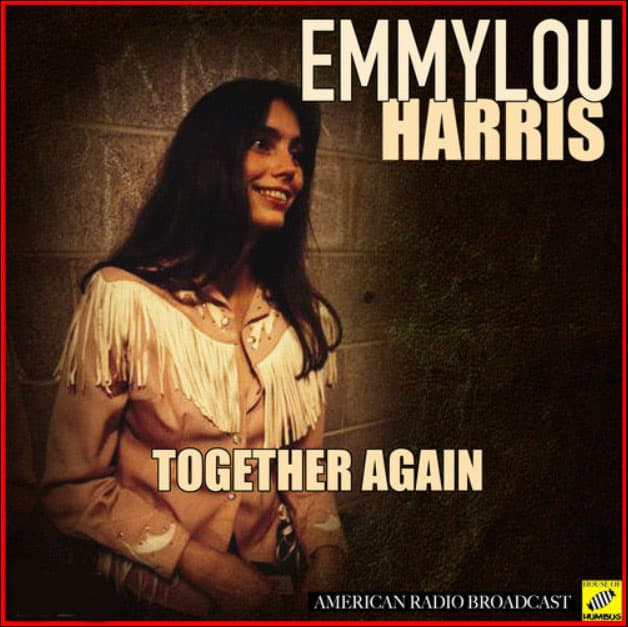
The Sweet Relief of Reconciliation: A Timeless Country Ballad
The song is a deceptively mournful-sounding celebration of a broken-hearted lover’s tears ending as they are reunited with their partner.
There are certain songs, aren’t there, that immediately transport you back to a specific time, a distinct feeling? They cling to the memory like the scent of old woodsmoke or your favorite faded photograph. For many of us who remember the country radio airwaves of the mid-1970s, Emmylou Harris’s exquisite rendition of “Together Again” is one such treasure. It wasn’t just a hit; it was a moment where a rising star solidified her place as a true country-rock luminary, bridging the gap between Bakersfield grit and a more sophisticated, shimmering Nashville sound.
Released in January 1976 as a single from her second major-label album, Elite Hotel (1975), this song was a significant milestone in Emmylou Harris’s burgeoning career. It marked her first number-one single on the US Billboard Hot Country Songs chart. This peak position, achieved in April 1976, was a huge commercial success and cemented her reputation as a formidable solo artist following the profound, but ultimately tragically curtailed, influence of her mentor, Gram Parsons. It also found international recognition, charting in the top 20 on the Belgian and Dutch pop charts, a testament to the song’s universal appeal and Harris’s unique vocal artistry.
The story behind “Together Again” begins not with Emmylou, but over a decade earlier with the legendary Buck Owens. Owens, the architect of the Bakersfield sound, wrote and recorded the song in 1964. Fascinatingly, Owens’s version was initially the B-side to his massive hit, “My Heart Skips a Beat,” but through the sheer power of its melody and lyrics, it not only charted independently but momentarily displaced its own A-side from the top spot on the country charts—an almost unprecedented occurrence. Owens himself noted that the song is often misinterpreted. With its slow, mournful tempo, many assume it’s a heartbreaking ballad of loss. Yet, as the lyrics reveal, it is fundamentally a happy song of reconciliation. “The long lonely nights are now at an end / The love that we knew is living again,” she sings. The sadness isn’t in the theme, but in the melody, which underscores the profound relief and sheer emotional weight of the reunion after a period of agonizing separation.
Emmylou Harris’s take on the song, produced by Brian Ahern, is a masterclass in faithful interpretation. She didn’t try to reinvent the wheel, but rather polished its original brilliance, wrapping her crystalline, emotionally resonant voice around Owens’s classic songwriting. Her performance is characterized by a vulnerability that lends weight to the lyric’s relief. The signature steel guitar solo, originally performed by Tom Brumley on the Buck Owens track (a solo often hailed as one of the greatest in country music history), is beautifully rendered in her version as well, providing that long, aching slide that captures the very essence of country melancholy and joy. This faithful yet distinctive cover demonstrated Harris’s brilliant curatorial skill—her ability to select the perfect song from the deep well of country, folk, and rock history and make it entirely her own, a defining trait of her entire career. Her single was backed with a cover of The Beatles’ “Here, There and Everywhere,” an unusual and genre-bending choice that further demonstrated her eclectic taste and ability to infuse any tune with a distinctly country soul, securing her reputation as one of the most innovative artists of her generation.